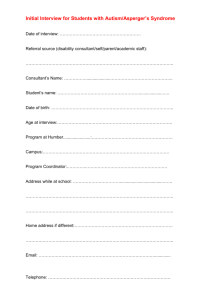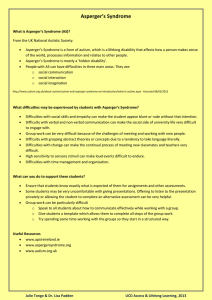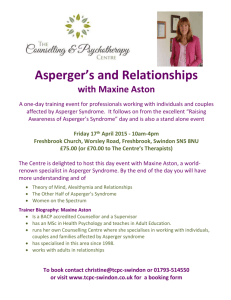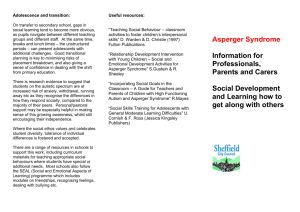Cambridge University AS Model of Support
advertisement
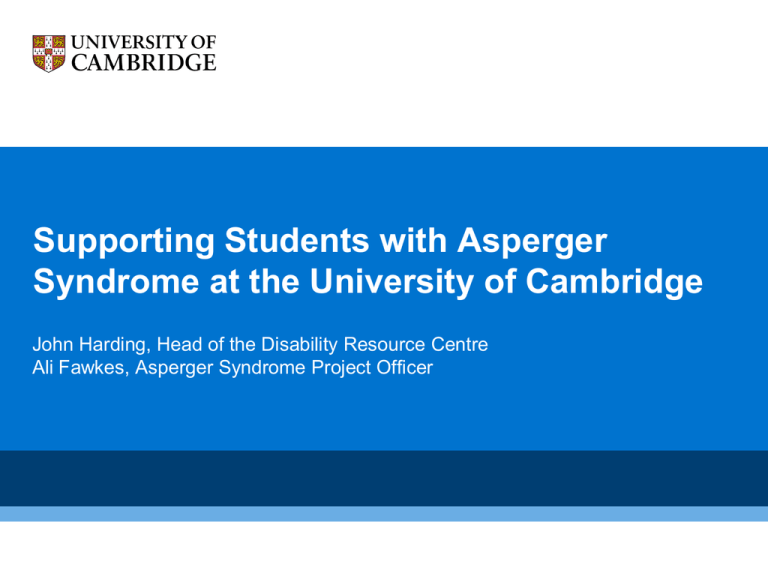
Supporting Students with Asperger Syndrome at the University of Cambridge John Harding, Head of the Disability Resource Centre Ali Fawkes, Asperger Syndrome Project Officer Supporting Students with Asperger Syndrome at the University of Cambridge • Background • Data • Model of support • Emerging themes and challenges 2 AS Project 2009-2012 • Funded by the Baily Thomas Charitable Fund • Collaboration between; ARC (Autism Research Centre) and the Disability Resource Centre (DRC) • AS Project Officer Recruited Aug 2009 • Project Steering Group: Prof. S. Baron-Cohen, Dr N. Martin, J. Hastwell and J. Harding and student representation. 3 Key project objectives: • Assess and develop Cambridge service provision - focus on transition • Build on existing research • Longitudinal study - students with AS • Develop model of best practice • Improve access to diagnosis • Raise awareness and develop networks 4 Key Project Outcomes • AS Social Group • Longitudinal Study – Model of Best Practice • Transitional Support Events • Student Support Documents • Careers Transition Programme, Careers Adviser Training • Training for academic staff and disability practitioners • Screening and fast-track referral process • Materials and Resources • Code of Practice development – alternative modes of assessment 5 Fastest rising cohort of students by disability category • Applications from students with Asperger syndrome increased from 21 in 2008/09 to 67 in 2012/13 (an increase of 219% over five years). • Over the lifetime of the project the number of students with a diagnosis of Asperger syndrome rose from 27 in August 2009 to 91 in Sept 2012 (an increase of 237% in three years) • 129 students with a diagnosis of AS in Dec. 2014 6 Applications data 7 Offer-holder data 8 Comparison with UK National Data • 2009/10 UK National undergraduate AS intake = 0.14% • 2009/10 Cambridge undergraduate AS intake = 0.23% • 2012/13 UK National undergraduate AS intake = 0.31% • 2012/13 Cambridge undergraduate AS intake = 0.68% • UK National 2012/13 - % of total student body UG and PG = 0.27% • Cambridge 2012/13 - % of total student body UG and PG = 0.66% • Source: HESA data and DRC Annual Reports 9 Student with existing diagnosis Student with possible ASC Screening at the DRC DSA/IDS application if the student requires support Student Information Form (SIF) Student Support Document (SSD) Referral to CLASS Signposted to other support or screening (including UCS) Support Available Transitions event for incoming students AS Social Group Alternative modes of assessment Sensory Assessments Links with external organisations such as NAS Careers workshops Emerging themes and challenges • Changes to Disabled Students Allowances (DSAs) • Increase in the number of students with ASC • Mental Health • Sensory Support 11
